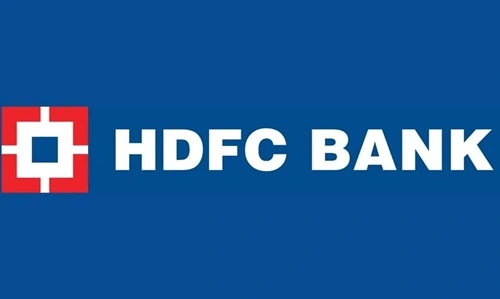HDFC Bank, India’s largest private sector lender by market cap, is set to announce Q1 FY26 results on July 19, 2025, alongside a highly anticipated bonus share issue and special interim dividend, demonstrating the bank’s confidence in underlying fundamentals. Analyst consensus (via ET Markets) expects profit growth of 1.5–6% YoY, NII growth of ~4.6–6.2%, though NIMs may face pressure. The backdrop: deposits are improving and NPA ratios remain manageable, but credit growth lacks momentum.

Strengths
1. Extensive Branch & ATM Network: HDFC Bank operates around 8,700+ branches and 20,900 ATMs, covering 2,200+ towns, supported by an expansive digital footprint with ~15,000 banking correspondents.
2. Robust Profitability & Asset Quality: The bank consistently delivers strong financial metrics: Q1 FY25 saw net profit of ₹70.5 billion, NIM at ~3.7%, GNPA at 1.33%, and high PCR (~184%), despite merger-related volatility.
3. Retail Lending Leadership: HDFC Bank dominates retail with loans in home, auto, credit cards, and personal segments—underpinned by a trusted brand and efficient risk management.
4. Sustainable Finance & ESG Credentials: The bank is targeting ₹10,000 crore in green financing by 2025, illustrating a strategic pivot toward environment-friendly projects.
5. Strong Investor Appeal: Market confidence is high: profit beat in Q4 FY25 led to all-time high share prices; Q1 board actions on bonus and dividend further fuel investor enthusiasm.
Weaknesses
1. Pressure on NII Margins: Rising funding costs and mortgage-heavy loan mix are expected to compress margins in the near term, with NII growth potentially muted.
2. Slow Credit Growth: Despite deposit traction, loan growth remains modest. Bloomberg estimates indicate credit growth may remain below 10% amid macro caution .
3. Urban‑Heavy Exposure: HDFC’s strong urban presence lacks deep penetration in underserved rural pockets—leaving headroom for fintech rivals and regional banks.
4. Rising Provisions in NBFC Subsidiary: HDB Financial Services (HDFC Bank’s NBFC arm) reported a 63% YoY rise in provisions and stage-3 assets increased to ~2.56%, underscoring credit risk in consumer lending.
Opportunities
1. Bonus & Dividend as Shareholder Catalyst: Lowering cash-equity fatigue, bonus shares and interim dividends can enhance capital traction and boost retail participation .
2. FinTech & Rural Expansion: Partnering with fintech platforms, neo-banks, and digital rural ecosystems can diversify revenue and reduce urban dependency .
3. Green Finance Growth: Continuation of green bond issuance and renewable projects financing will align with global ESG mandates—opening high-quality loan growth and fee income.
4. Digital Products & Cross-Selling: Upselling insurance, wealth, digital wallets, and vendor finance can increase share-of-wallet and reinforce customer relationships.
5. Consolidation Tailwinds: Relaxed regulatory norms around LTRO and LCR may help HDFC maintain superior loan growth ahead of PSU competitors.
Threats
1. Macro & Rate Volatility: An unexpected economic slowdown, geopolitical shock, or CPI uptick could suppress both loan and deposit growth .
2. Credit Risk in Unsecured Loans: Weakening performance in NBFC lending could ripple into the parent bank, raising provisions and eroding risk appetite .
3. Intense Competition & FinTech Disruption: Growing appetite from ICICI, Axis, Kotak, and fintech players could pressure margins and acquisition costs .
4. Regulatory Scrutiny & Compliance: With the bank under ever-watchful regulatory lens—especially post-merger—compliance in data security, interest disclosures, and asset classification remains critical.
5. Cybersecurity & Fraud: As digital adoption rises, cybersecurity threats and fraud risks escalate, demanding robust investments in defense infrastructure.
Future Outlook
Margin Stabilization: NII is likely to recover in H2 FY26 as older high-cost borrowings roll off. Analysts expect NIM to stabilize near 3.8% by FY27.
Loan Growth Rebound: With tighter regulatory limits eased and market confidence returning, loan growth could pick up to 12–15% in FY27 .
Rural & Digital Reach Expansion: Leveraging fintech and neo-banking models, HDFC may broaden its rural footprint and challenge newer entrants.
Continued Green Lending: The bank is expected to escalate its sustainable finance portfolio beyond ₹10,000 crore, enhancing fees and loan balances.
Investor Sentiment & Valuation Support: Bonus shares and interim dividends are likely to trigger positive stock performance; sustained delivery will cement investor confidence.
Operational Resilience: Maintaining GNPA near ~1.3%, strong credit cost control, and effective provisioning in consumer finance will be crucial.
HDFC Bank remains India’s preeminent private lender—backed by strong capital, performance momentum, and institutional trust. Execution around margin management, prudent provision control, and digital inclusion in rural India will determine if it continues to lead or cede ground to agile competitors in the next 2–3 years.